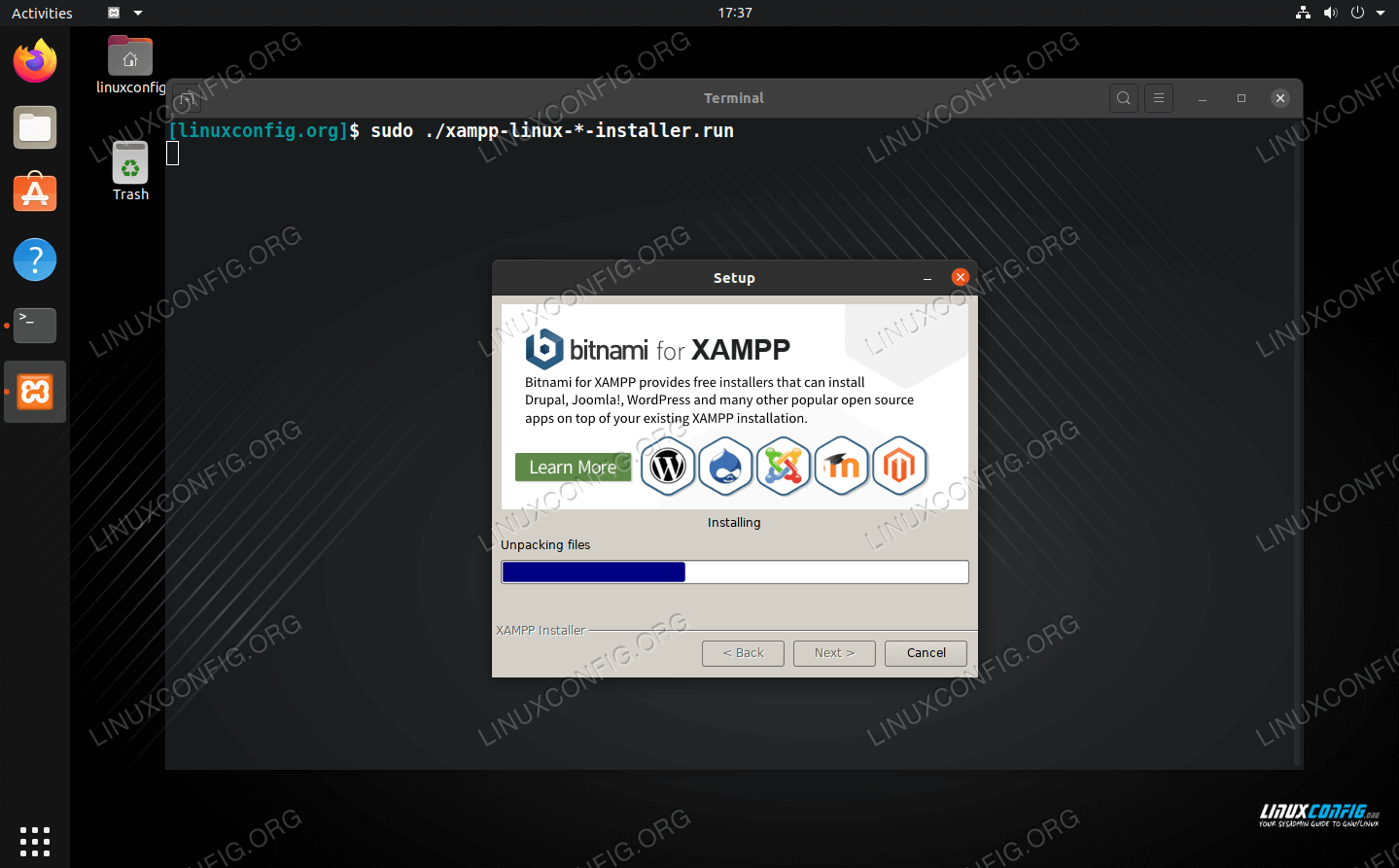

Installing XAMPPįollow the guidelines on the XAMPP site, which boil down to this: sudo tar xvfz xampp-*.tar.gz -C /opt

The final step is to actually mount said partitions on the Logical volumes we just defined, as well as choosing their filesystems. It’s safest to choose an ext4 filesystem for the partitions (except swap, which doesn’t have a filesystem) but keep in mind that it’s necessary to unmount a partition based on ext4 before you can resize it (there are filesystem with no such restriction like ReiserFS). This leaves plenty of room to grow any partition that needs it, as this is usually easier than shrinking one. The one I went with for the server is the following, considering I have a 10gb /boot partition from earlier.
The next step is to create a Logical Volume (LV) for every partition you want to have on the drive. First create a volume group and point it towards the physical volume (don’t forget to actually select the volume by pressing spacebar). Now configure the Logical Volume manager. In the option of “use as”, set it as the physical volume for LVM. Recommended size: 10GbĪfterwards, create a logical volume of the remaining disk space. Note: Keep /boot on a seperate primary ext4 partition, safer than to put it under LVM as well. The computer I’m installing on has a 250GB HDD. By using the Ubuntu USB Creator tool you will avoid any trouble that the alternate distribution has with other live usb creators in regard to components it needs to load of “cd” which in this case is USB, but for some reason doesn’t get picked up by the installer. If you want to install the alternate distrubution of a usb, you’re best bet is using an existing Ubuntu install to create the live-usb. DDClient: The tool that will keep the dynamic dns updated on the domain. : The site where I register for a free domain. OpenSSH-server: To allow for remotely controlling the server. Drupal: The actual site I will be hostin. Phpsysinfo: To check server resources and information (self-contained php website). XAMPP: Easy way of getting LAMP up and running. Linux: I’m using Ubuntu 12.04 Alternate distribution, because of the option of using LVM for the partitions.






 0 kommentar(er)
0 kommentar(er)
